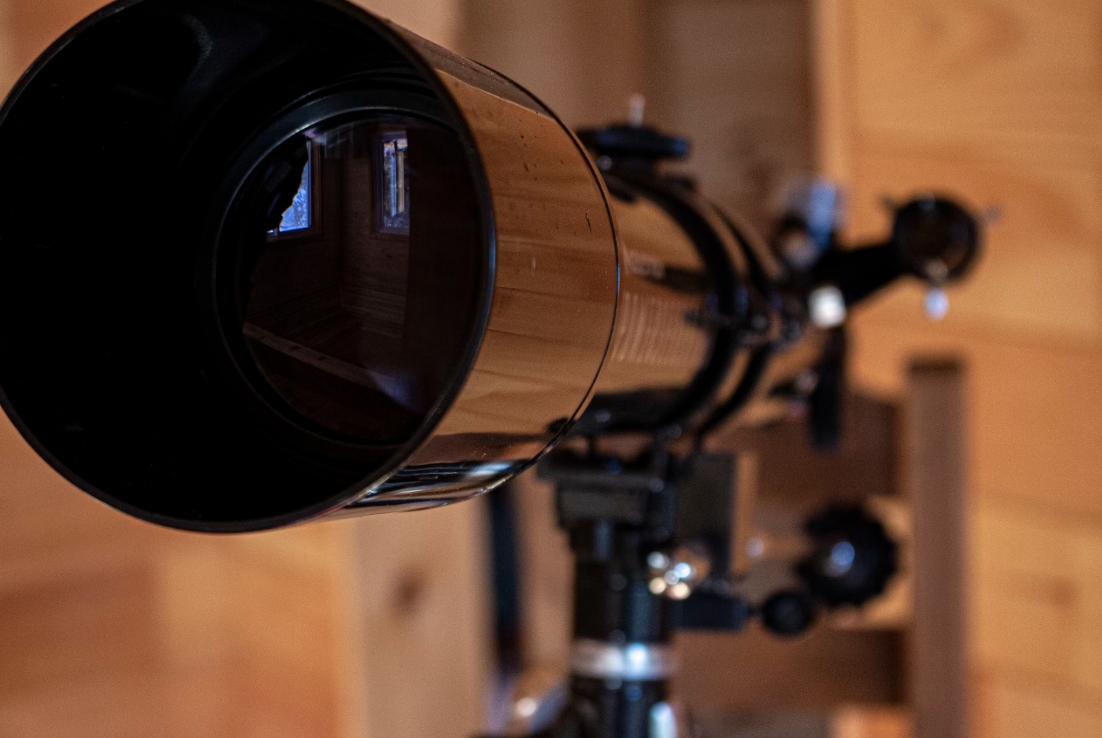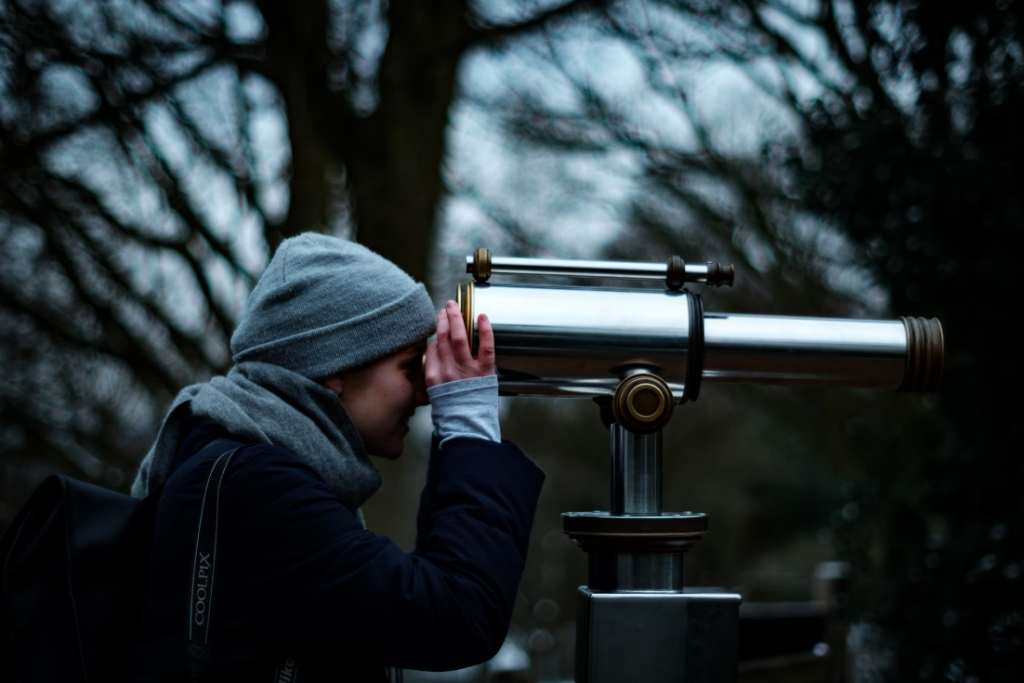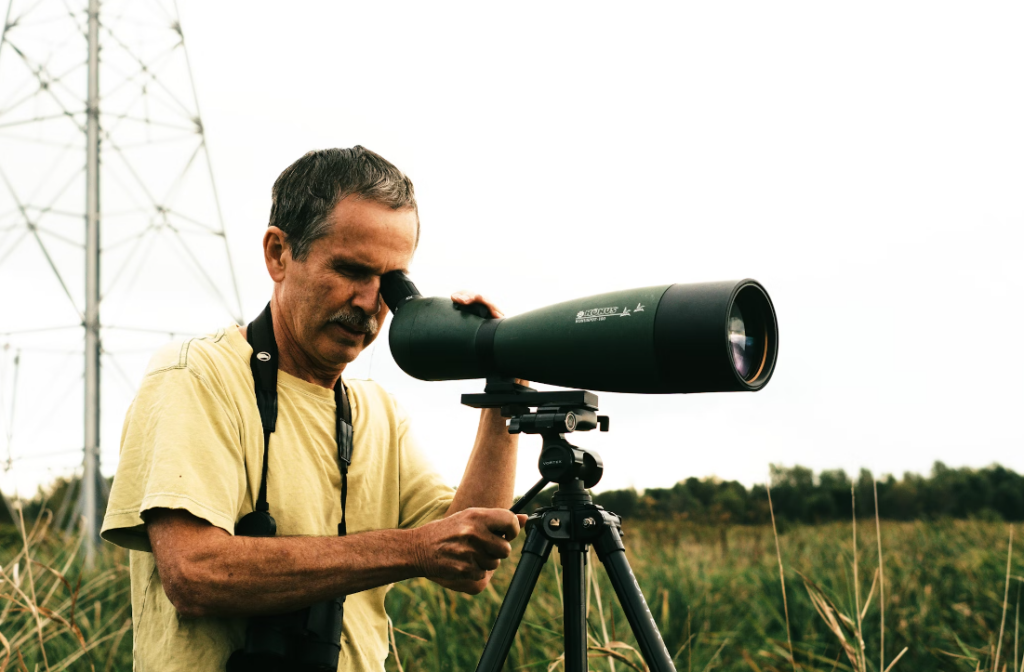
Have you ever looked through a telescope and wondered why you can’t simply zoom in or out like you can with a camera or binoculars?
The truth is they don’t work like that, but you can make things appear bigger!
In this quick post, I’ll explain how zooming works on telescopes and show you 4 ways to zoom in on a telescope.
Unlike cameras, which use a zoom lens system to adjust the magnification, telescopes rely on a combination of their objective lens (or mirror) and eyepiece to magnify celestial objects.
Also Read: Telescope won’t focus
The objective lens or mirror is responsible for gathering and focusing light from distant objects.
The eyepiece acts as a magnifying glass and enlarges the focused image.
How much a telescope can zoom in is calculated by dividing the focal length of the objective lens or mirror by the focal length of the eyepiece.
For example, if a telescope has a 900mm focal length objective and a 25mm focal length eyepiece, the magnification would be 900/25 = 36x.

Like I said, you can make things look bigger with a telescope by changing the eyepiece.
The magnification of a telescope depends on the ratio between the focal length of the telescope’s main lens or mirror and the focal length of the eyepiece.
Most telescopes come with different eyepieces, each labeled with its focal length (like 25mm, 10mm, or 6mm).
To zoom in, just swap the eyepiece you’re using for one with a shorter focal length.
For example, if you’re using a 25mm eyepiece that makes things look 40 times bigger, switching to a 10mm one could make them look 100 times bigger.
BTW check out our 80mm High-Definition Monocular Telescope
Eyepiece projection is a technique that lets you make things look bigger by projecting the image from your telescope’s eyepiece onto a surface or camera sensor.
You do this by putting a projection eyepiece (or a regular eyepiece with a projection lens) into the telescope’s focuser.
Then you position a screen or camera at the right distance to capture the image.
This can give you much higher magnifications, but it has some downsides.
The projected image might look dimmer, and you might see distortions or aberrations, depending on how good the optics are and how far away the projection is.
A barlow lens is an additional optical element that can increase the magnifying power of your eyepiece. It’s inserted between the telescope’s focuser and the eyepiece.
This means you can zoom in more without having to switch to a different eyepiece.
Barlow lenses come in different strengths, like 2x and 3x.
A 2x barlow lens makes things look twice as big, while a 3x one makes them look three times bigger.
So, if you’re using a 25mm eyepiece that makes things look 40 times bigger, adding a 2x barlow lens would make them look 80 times bigger.
If you often want more magnification, you may want to consider upgrading to a telescope with a longer focal length.

BTW check out our High-Precision 127mm APO Triplet Refractor Telescope
Telescopes with longer focal lengths naturally give you more magnification because the main lens or mirror has a longer focal length compared to the eyepiece.
Let me show you an example:
If you have a telescope with a 1200mm focal length and a 25mm eyepiece, you’d get 48 times magnification. But with a telescope that has a 900mm focal length and the same eyepiece, you’d only get 36 times magnification.
Apart from the eyepieces, there are a number of other factors also come into play:
The diameter of the objective lens or mirror (also known as the aperture) is super important for gathering light. A larger aperture allows for higher magnification while maintaining a bright and clear image.
Even with a powerful telescope, atmospheric turbulence and light pollution can limit the practical magnification achievable.
Clear, steady air and dark skies are essential for high-magnification observation.
While higher magnifications can be tempting, they also come with challenges.
Here are some tips to help you get the most out of your telescope:
Higher magnifications amplify even the slightest vibrations, making a sturdy tripod or equatorial mount essential for steady viewing.
Begin with lower magnifications to locate and center your target object, then gradually increase the magnification for detailed observations.
For those seeking even higher magnifications, eyepiece projection techniques can be used, but with cautions.
This method involves projecting the eyepiece image onto a surface or camera, effectively increasing the magnification but also introducing potential distortions and dimming the image.
The Earth’s atmosphere is typically more stable and clear during the night, providing better conditions for high-magnification observing.
Don’t be afraid to try different eyepieces and magnifications to find the best combination for your observing targets and conditions.
Stargazing is an adventure, and part of the joy is discovering what works best for you.




Leave a comment